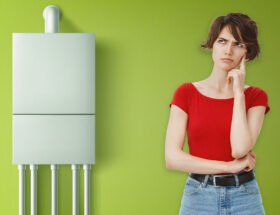Prepping a construction or industrial site involves more than just sourcing materials and scheduling deliveries with your aggregate company. As a site manager, one of your key responsibilities is ensuring the right facilities are in place. Not just for work, but for your team’s wellbeing too.
Accommodation is a crucial part of this setup, especially for remote sites like mining operations or large-scale construction projects. Just as you’d install a portable site office for administrative tasks, you also need reliable accommodation units where workers can rest, hydrate, and take breaks.
Whether you’re overseeing a factory, construction site, or mining project, it’s essential to provide safe, compliant, and comfortable facilities. That includes access to restrooms, break areas, and drinking water.
When it comes to site accommodation, both portable cabins and permanent structures offer distinct advantages. In this article, we’ll explore the pros and cons of each, helping you decide which solution best fits your project’s needs.
Portable Cabin
Portacabins, or portable cabins, are prefabricated buildings that can be easily moved. They may also be refurbished shipping containers equipped with utilities such as electricity, water, and sewage facilities. Their mobility allows for relocation on-site or to different locations as needed, enabling developers to expand operations without the time and resource investment required for traditional construction.
Here are some features to consider when choosing portable cabins over more permanent structures:
Cost-Effective
Portable cabins and refurbished shipping containers are often more affordable than. These are mass-produced or secondhand containers, helping reduce production cost and wastage. These accommodations can be brought to the location and used immediately, saving labour costs.
Customisable
Portable cabins find their usage across different industries and can be tailored to individual needs. By customising the internal specifications and dimensions, you can add electrical appliances, windows and doors, install utilities or add technological advancements, making your site office a state-of-the-art place from which you can monitor different processes seamlessly.
Quick Installation
Do you have a batch of new workers joining your mining site or factory? Portable cabins can be simply ordered from local suppliers and easily installed on-site to make space for your new employees. Conversely, during the off-season, you can remove some of these cabins. This gives you flexibility to scale your operations up or down depending on your requirements.
Eco-friendly
In both the construction and mining industries, there is a strong emphasis on reducing carbon footprints. The off-site construction of modular cabins helps minimise waste generation. These contemporary structures are often equipped with eco-friendly features such as LED lighting, solar panels, double-glazed windows, and energy-efficient heating systems.
If you want to embrace green alternatives, portable cabins might be the right solution for you.
Permanent Structure
A permanent structure is built for long-term use and is intended for longevity and durability. They often come equipped with extensive utilities such as electricity, water and heating. They are safer, compliant and adhere to building regulations.
Here’s a look at some of the features of a permanent structure for your site office:
Durability
These structures are usually made of wood, bricks and cement and are made to last and can sustain under different weather conditions. These buildings can be used for decades without requiring extensive maintenance or upgrades. If you have a permanent on-site structure, you can also lease it or sell it, if the need arises.
Expensive
Building a permanent structure is expensive, but it often gives a positive return due to its long lifespan. The initial cost can be exorbitant, making many developers and aggregate companies look for affordable alternatives, especially in the current economy.
Unsuitable for the Environment
The environmental cost of these structures is much higher than that of portable cabins. Constructing a building leads to noise pollution and demolition, and excess waste often finds its way into the landfill, leading to soil and water pollution.
In Conclusion
Portable cabins are gaining popularity over permanent structures as site offices and on-site accommodation. These temporary structures often have advanced security systems and locking mechanisms, preventing unauthorised access and vandalism.
They are cost-effective and eco-friendly, two important pillars of modern businesses that are looking for affordable and sustainable alternatives. Old shipping containers that are decommissioned can now be used as site accommodation, reducing the dependence on new products and waste generation.
The flexibility offered by portacabins is also unmatched. You can easily scale the number of welfare units up or down depending on the demand. Unlike a permanent solution, which is fixed. These cabins can also be moved about, allowing you to maximise their utilities and making operations much easier. The construction of these structures is usually done off-site, helping reduce on-site disruptions. You can quickly install these without spending hours building them.
So, what are you choosing for your next site office, a portable cabin or a more permanent structure?










